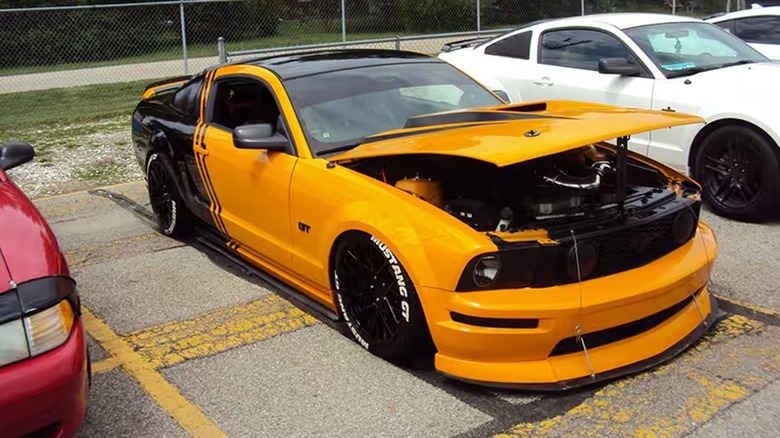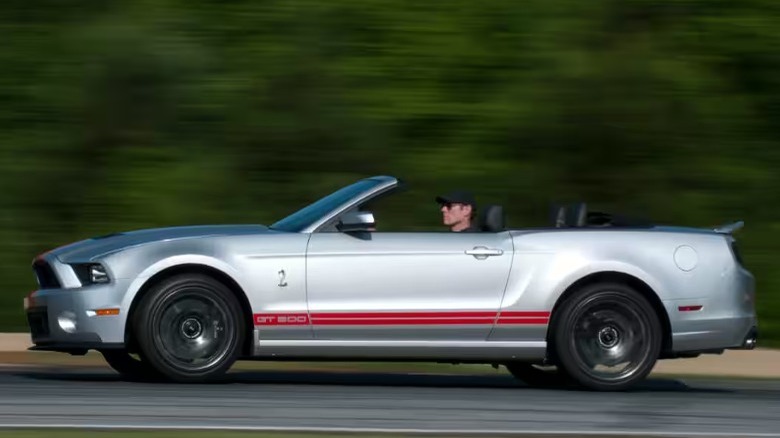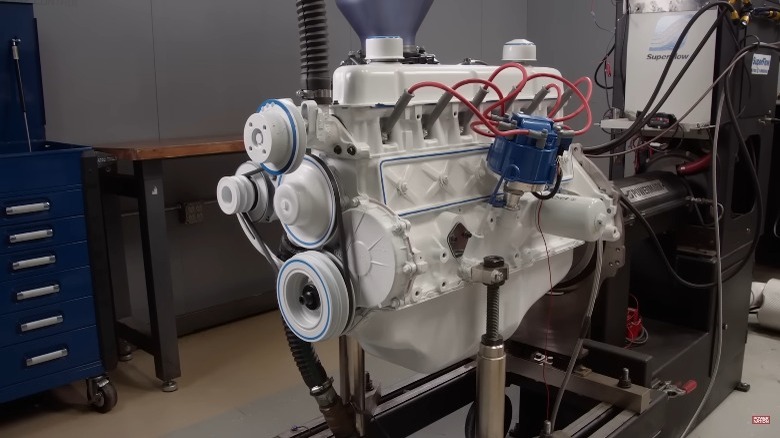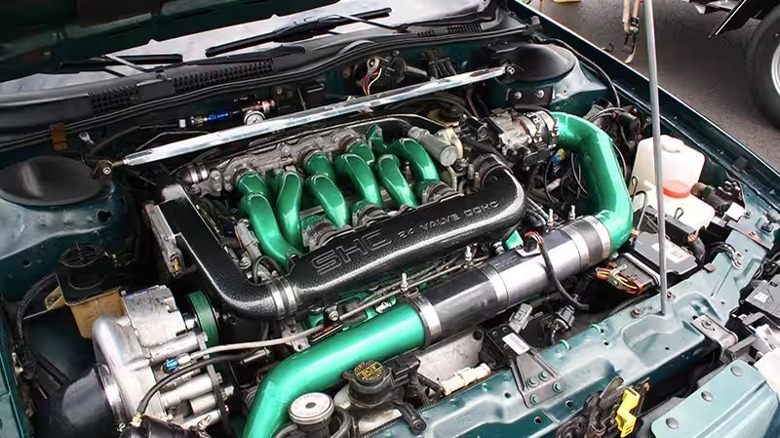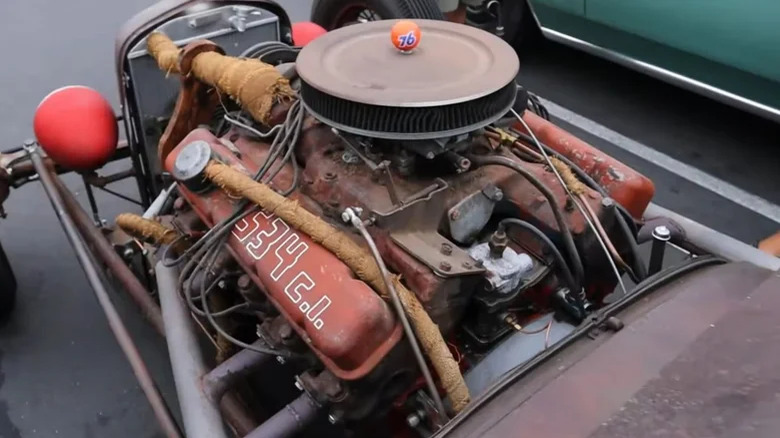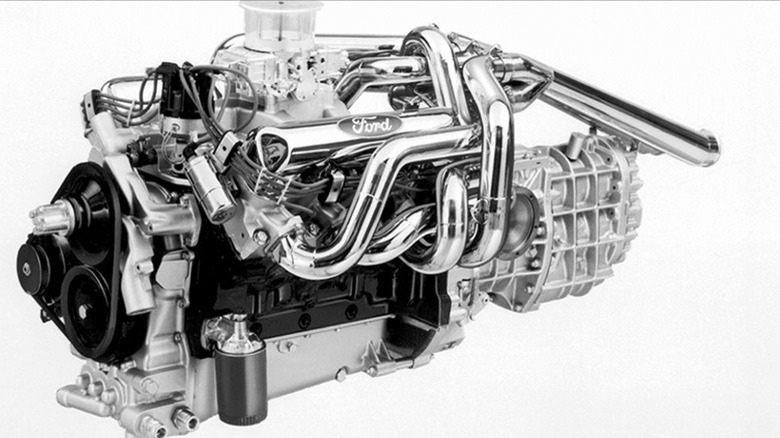5 Gas-Powered Engines We Wish Ford Still Made
Ford has made some truly remarkable engines since the company was founded in 1903, and its motors power everything from massive trucks to iconic muscle cars, and track-bound race cars to warplanes and tanks. While it's hard to choose just five engines the U.S. automaker designed and made, we're looking at five class-leading gasoline-powered engines that arguably outshone other contemporary engines across its history. Some were chosen for their reliability, and others for sheer performance or record-breaking specifications. These are engines that Ford no longer makes, but we wish it did still, even if only for the bragging rights of owning new versions of them.
Our wishlist of five Ford engines starts in the 1960s and goes up to the 2010s. It has the supercharged Trinity V8 engine that delivered a staggering 662 HP and was seen in the early 2010s Ford Shelby GT500; the much-lauded inline six Ford 300 engine that was used in various forms for over 30 years; the SHO Taurus V6, a high-performance version of a family car engine that rivaled those found in muscle cars of the time; one of the largest V8 engines ever produced by Ford — the 8.7-liter Super Duty V8, and finally, the FE series 427 V8, which had a stellar NASCAR career and won all three podiums at the 1966 Le Mans.
5.8-liter Supercharged Trinity V8 Engine
Designed for the 2013 Ford Shelby GT500 and also available in the 2014 version, the supercharged 5.8-liter Trinity V8 engine was, at the time, one of the most powerful production V8 engines in the world, producing 662 horsepower at 6,500 rpm. It also delivered 631 lb-ft of torque at 4,000 rpm. Featured on SlashGear's 10 most powerful Ford engines list, it was developed by Ford's Special Vehicle Team (SVT) and was coupled with a 2.3-liter Eaton TVS supercharger, capable of supplying up to 14 psi of boost — up from 9 psi of the previous generation. The 2013 Shelby GT500 was capable of going from 0 to 60 mph in 3.5 seconds, finishing a quarter mile in 11.6 seconds, and a claimed top speed that exceeded 200 mph.
Though it shared parts from both the Coyote and Triton engines, the 5.8-liter Trinity V8 was a massive upgrade over the supercharged 5.4-liter V8 engine seen in the 2011 and 2012 Shelby GT500, which put out 550 horsepower and 510 lb-ft of torque. Among the upgrades on the Trinity V8 were an over-rev feature that allowed the engine to redline up from the regular 6,250 rpm to 7,000 rpm for up to eight seconds, a larger oil pump, new cylinder heads with better coolant flow, an aluminum sump, a five-layer MLS headgasket, Ford GT camshafts, piston-cooling oil jets (the same as the Coyote), as well as an improved compression ratio (from 8.5:1 to 9.0:1).
4.9-liter Ford 300 I6 Engine
Considered amongst the most reliable engines of all time, the Ford 300 I6 (or inline six) is featured on SlashGear's most reliable Ford engines list and the most reliable six-cylinder engines of all-time list. The Ford 300 I6 in its many iterations was used for over 30 years, from 1965 to 1996, starting its life in F-Series trucks, and being used in everything from UPS trucks and tractors to airline tugs. Featuring a cast iron overhead-valve cylinder head and block, the 4.9-liter 300 CID engine has been termed "unkillable," and often outlasted the trucks it powered.
The Ford 300 I6's longevity can also be attributed to other design choices made by the company. It used timing gears — which may be noisier than belts and chains, but do not stretch or come loose. It was also a non-interference engine, preventing damage to the valves if the gears failed. Another durable design choice was having the camshaft mounted within the block itself. While it always offered only middling horsepower — some early iterations delivered 170 horsepower under a different rating system, before dropping to 100 horsepower, and going up to 150 horsepower in the last few years — it had substantial torque, producing between 223 lb-ft and 265 lb-ft in later years, and this was low-end grunt, at figures as low as 1,600 rpm. It was also available in CNG and LPG variants for industrial uses.
3.0-liter SHO Taurus V6
Next, we have a family car engine that got a high-performance tune-up and became one of the best engines in the company's stable. We're talking about the Ford Taurus car, introduced in 1986 with an inline four 2.5-liter HSC engine that produced just 90 horsepower, and an optional 3.0-liter Vulcan V6 engine that produced up to 140 horsepower. A 3.8-liter Essex V6 option was also introduced in the following years, delivering the same 140 horsepower but more torque. In 1989, the company introduced the Ford Taurus SHO (Super High Output), utilizing a 3.0-liter SHO V6 engine developed for the company by Yamaha that was capable of outputting 220 horsepower at 6,200 rpm and 200 lb-ft of torque at 4,800 rpm.
Featuring on SlashGear's most impressive Ford engines list, the SHO Taurus V6 redlined at 7,000 rpm and propelled the special edition family car from 0 to 60 mph in just 6.6 seconds, let it complete the quarter mile in 15 seconds, and gave it a top speed of 143 mph — all figures closer to a sports car. In fact, it had just 5 horsepower less than the 1989 Mustang GT, which produced 225 horsepower with a 5.0-liter V8 engine. Essentially a redesign of the 3.0 Vulcan V6, Yamaha gave it a dual-overhead camshaft (DOHC) and a 24-valve aluminum head, among other upgrades. The 3.0 SHO V6 was offered until the 1995 model year. The engine was also used in the one-off Ford SHO Ranger.
8.8-liter 534 CID Super Duty V8
One of the biggest engines ever produced by Ford, the 8.8-liter 534 cubic inch Super Duty V8 was developed in 1958, and stayed in production up till 1981. Capable of outputting 266 horsepower at 3,200 rpm and 490 lb-ft of torque at 1,800 rpm, the engine was used on the company's heavy-duty trucks. Also known as the 534 SD V8 or the SD-534 V8, the engine had a massive 5.25-inch bore spacing, able to fit in a large 4.5-inch bore and a 4.2-inch stroke. Made in Ford's Cleveland engine plant, several innovations helped power the engine through its over-20-year-production lifespan.
The Ford 534 SD V8 had a low compression ratio of 7.5:1, coolant-jacketed spark plugs, four-ringed aluminium pistons, self-cleaning intake valves, a three-stage coolant circuit with front and rear thermostats, sodium-filled exhaust valves, an internal oil cooler, and more innovations. The SD V8 engines shared a design feature with the 1958 MEL V8 engines — combustion chambers within the block itself, rather than within the cylinder head. For commercial uses, a skid-mounted engine package was also offered, with the engine placed within a metal enclosure. Apart from trucks, the 8.8-liter Super Duty V8 was used to power pleasure boats developed by Seamaster Marine in the 1960s and 1970s. The feature-set for the Super Seamaster 534-TI-B included twin turbochargers with intercooling, a setup that boosted the output of the engine to a solid 400 horsepower and 657 lb-ft of torque.
7.0-liter FE 427 V8
Arguably one of the best engines ever put in a Ford automobile, the FE 427 V8 was introduced in 1963. While it was called the 427 V8 to be in line with the displacement limits of racing events of the time, its actual displacement was 425 cubic inches. Race-inspired, the engine had some outstanding showings on a number of circuits, including dominance in the 1963 NASCAR championship, and it also took the first five spots in the year's Daytona 500. The engine was modified for the Ford GT40 MkII at Le Mans in 1966, by significantly reducing the engine's weight, and achieving 485 horsepower at 6,400 rpm and 475 lb-ft of torque at 3,600 rpm. The 427 V8 model was called the GT40X, and it won all three podium spots at the 24-hour endurance race.
The street version of the FE 427 V8 first appeared in the 1963 Ford Galaxie as a top-oiler, and produced around 425 horsepower and 480 lb-ft of torque. In 1965, the side-oiler version was introduced. The FE 427 V8 had a few more outings on the street, most famously showing up on the Shelby Cobra roadster. A special version with a single-overhead camshaft (SOHC) called the Cammer was developed for racing in 1965, but was banned by NASCAR before it ever made it to the race track. It did become available to NHRA hot rod customers, however, and it produced a ridiculous 616 horsepower and 515 lb-ft of torque.
